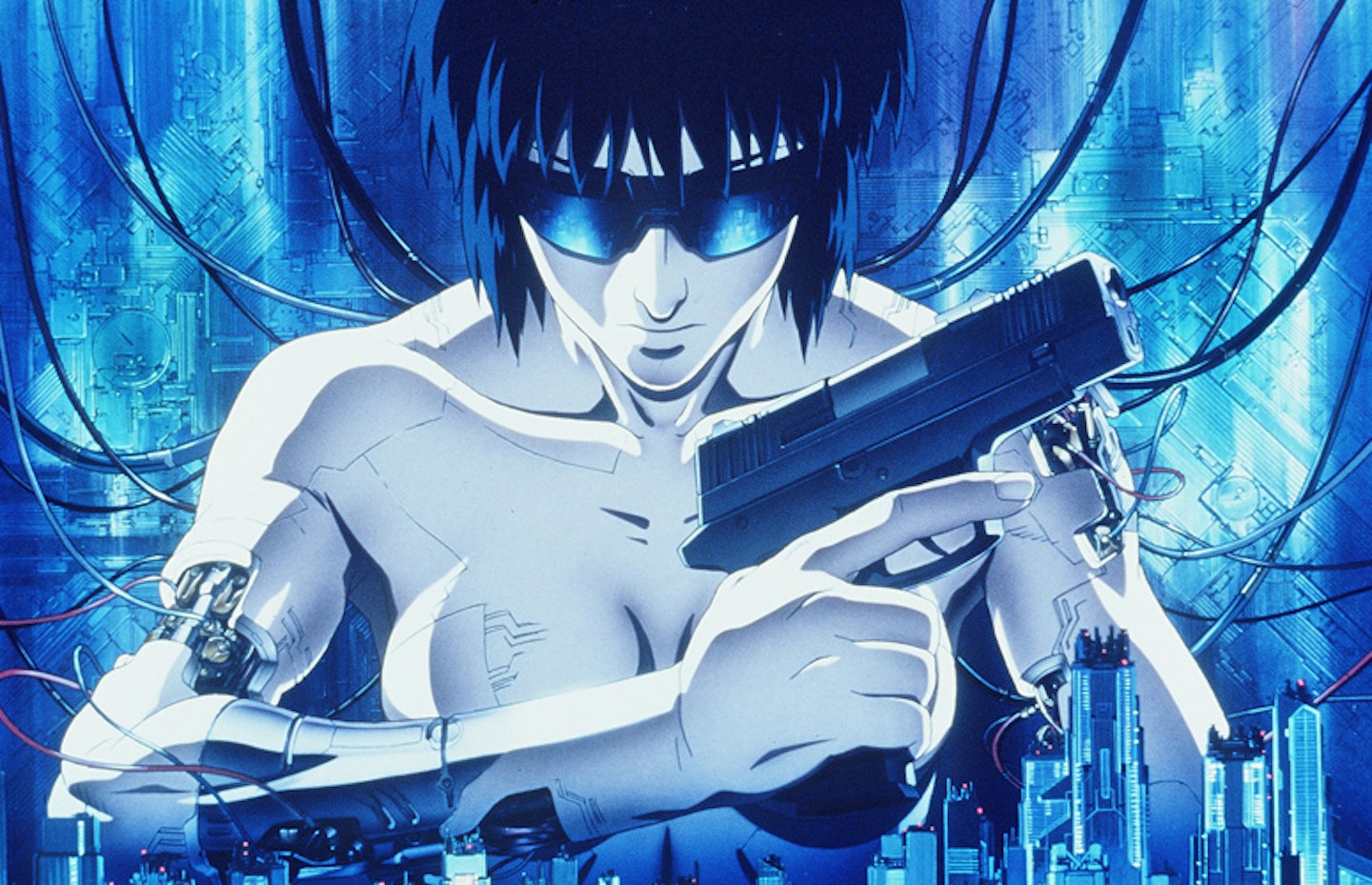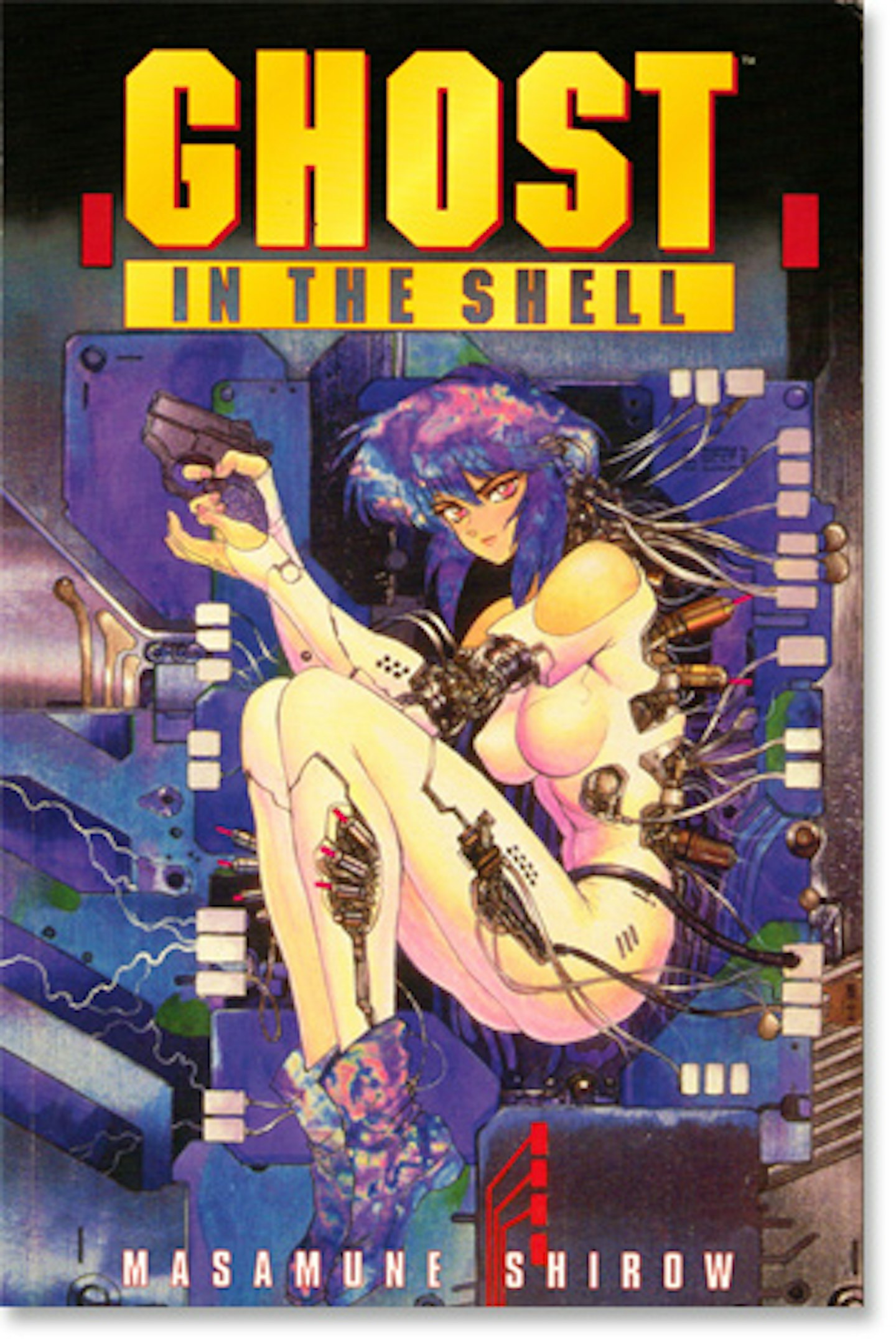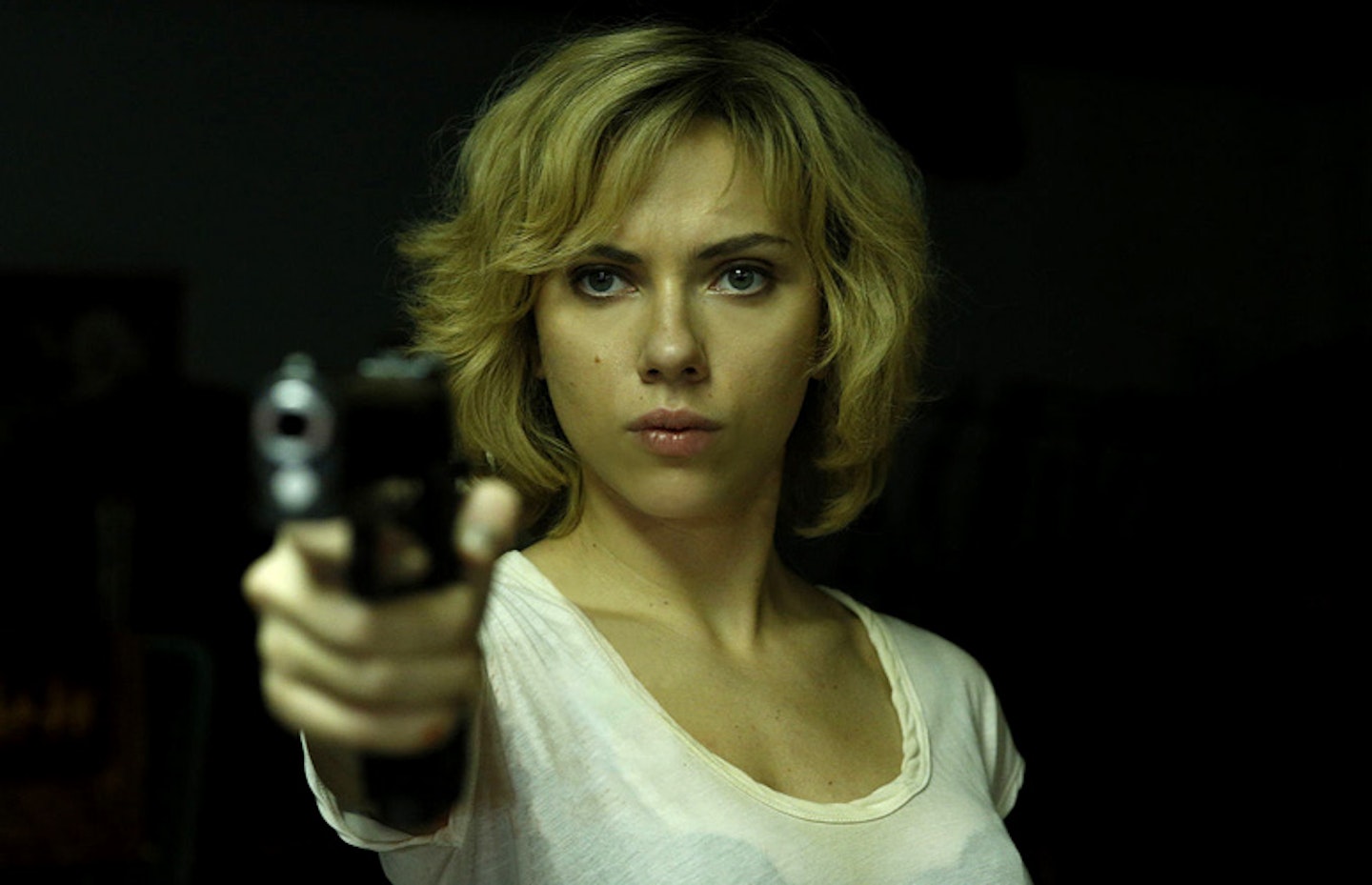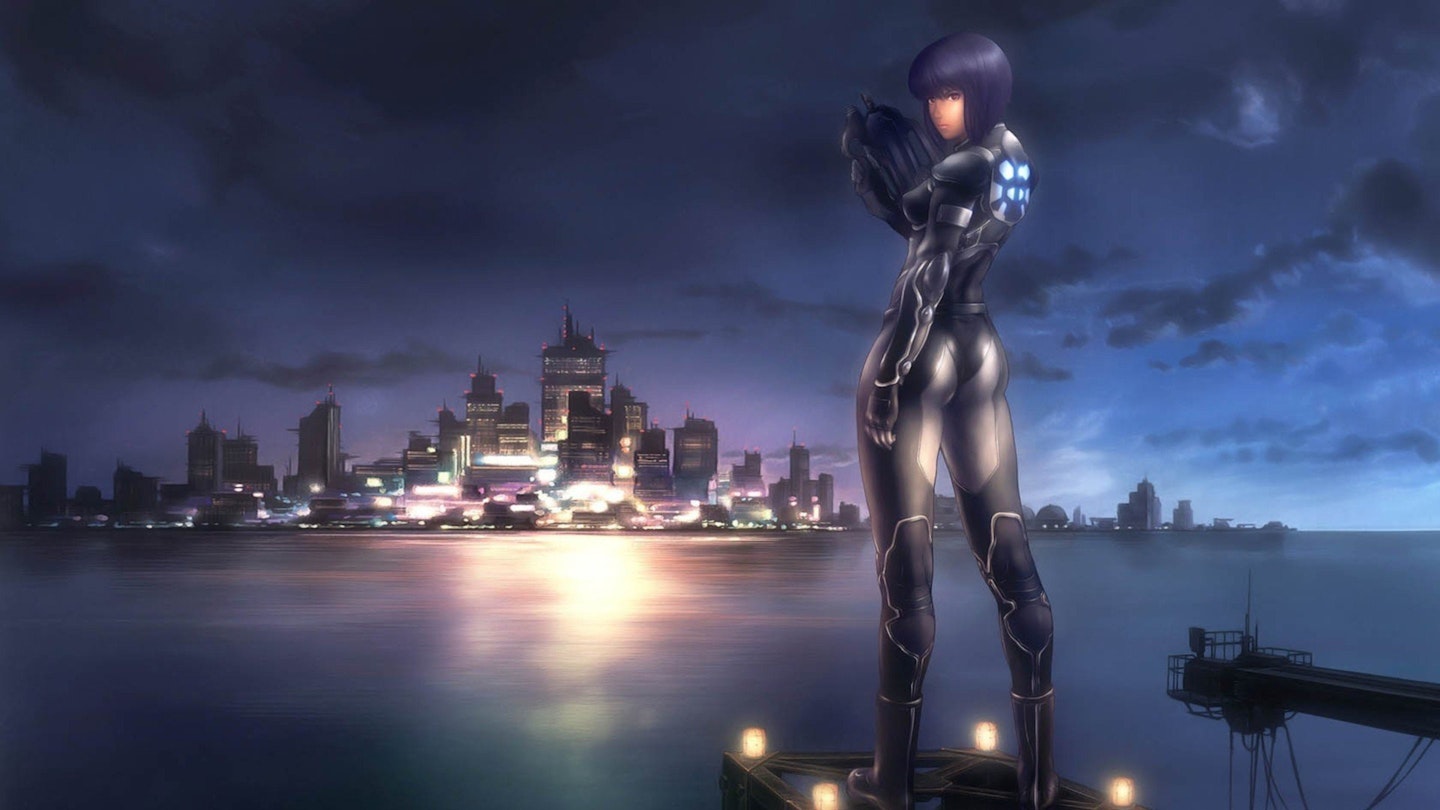With the head-spinning announcement last week that Scarlett Johansson has signed up for the new English-language, live-action remake of the seminal cyberpunk anime Ghost In The Shell, here’s a crash course in the series so far. The time has come to cast aside your bonds and elevate yourselves to a higher plane...

What Is Ghost In The Shell, Exactly?
Well, it’s a story that’s grown in the telling. Are you paying attention? Deep breath... First it was a series of manga, written and drawn by Masamune Shirow in the pages of Young Magazine between 1989 and 1990. Then in 1995 it became famous via the anime from Production I.G, directed by Mamoru Oshii and adapting one particular story thread from the sprawling comic (see below for details). Shirow returned for more comics in 1997, producing Ghost In The Shell 2: Man-Machine Interface, again for Young Magazine. A chapter from that became the anime Ghost In The Shell 2: Innocence (again by Oshii) in 2004, but before that came the Animax TV series Stand Alone Complex and Stand Alone Complex: Second GIG, which told their own stories independent from the print source. That iteration finished in 2006 with Stand Alone Complex: Solid State Society. Since then there’s been another offshoot in prequel series Ghost In The Shell: Arise. Got all that?

The Original Manga
Ghost In The Shell was originally published in Japan under the catchy title Mobile Armoured Riot Police. Shirow has always maintained he preferred Ghost In The Shell as a title (a vague reference to Arthur Koestler’s Ghost In The Machine) but had Riot Police imposed on him by his publishers, Kodansha. It takes place in a cyberpunk mid-21st century where humans with bio-implants – many of whom have gone full cyborg – are commonplace, and artificial brains are under constant danger of attack from hackers. One such is the mysterious Puppeteer, a habitual cyber-criminal under investigation by our heroes at Public Security Section 9. Further stories followed, including one in which regular series protagonist Major Motoko Kusanagi – a human consciousness in an entirely cybernetic hot-babe humanoid body - has to fend off an invasive A.I..
The Original Film
[SPOILER WARNING] Oshii’s seminal anime, stripping out much of the goofy humour of the comics, dealt with the manga’s plotline about ‘The Puppeteer’, here renamed the Puppet Master. Cyborg cop Motoko Kusunagi and her Section 9 team are on the hacker’s trail when they find the remains of an entirely cybernetic body, which spontaneously assembled itself and escaped from a factory. It initially seems the robot was a lure created by rival organisation Section 6 to trap the Puppet Master’s consciousness (or ‘ghost’), but it transpires that Section 6 is lying and that one of their secret projects actually created the Puppet Master in the first place. It’s not a human hacker after all, but a rogue A.I..
Confusingly, this film was controversially rejigged and remixed with new animation FX as Ghost In The Shell 2.0 in 2008. Don’t mix that up with Ghost In The Shell 2: Innocence, which came out four years earlier and is an actual sequel.
On a side note, the original release’s English dub is notoriously wretched, but did at least lend itself to some blistering drum and bass(skip to 02.38 if you’ve got a headache).
Ghost In The Shell’s World
Ghost In The Shell is as much a dictionary definition of ‘cyberpunk’ as William Gibson’s Neuromancer, which preceded it by a few years. Cyberpunk, as you most likely know, is a branch of science fiction taking place on Earth in a near-ish, recognisable future. It concerns itself not with aliens, spaceships and distant planets, but with industrial decay and noirish plots, often about corporate espionage and artificial intelligences. Like Neuromancer, Ghost In The Shell’s world is much interested in post-human tech upgrades, such as the ability to plug yourself into a network via implanted sockets in your organic body. Also like Neuromancer, it fails to anticipate the invention of the mobile phone. The Wachowskis quite openly plundered both for their Matrix trilogy. Oshii was even asked to be one of The Animatrix’s contributors, but had to decline due to his commitments to Ghost In The Shell 2: Innocence.

The Sequels
Ghost In The Shell 2: Innocence (above) is a loose adaptation of the Robot Rondo chapter from the Ghost In The Shell: Man Machine Interface manga. Cyborg Section 9 operative Batou and his partner Togusa are put on the case of a series of murders committed through the creative medium of malfunctioning sex robots, or ‘gynoids’. The trail leads to sinister manufacturing company Locus Solus, who are trafficking young girls in order to duplicate their consciousnesses and put them to use as more realistic ‘ghosts’ animating the kinky dolls.
Ghost In The Shell: Stand Alone Complex sees Section 9 on the trail of another hacker called the Laughing Man, while sequel Second GIG involves a terrorist group called Individual Eleven. The series was completed by Solid State Society: another hacker story revolving around forced suicides and a dangerous tech virus. The Stand Alone Complex itself, incidentally, is a philosophical idea underpinning both series. In a nutshell far too small for the job, it’s basically concerned with the ability of individuals to trigger mass copycat behaviour.
Ghost In The Shell: Arise is a series of four feature-length OVAs ('original video animations') set two years before the first manga and film, charting some of Section 9’s early cases.
We’d also be remiss not to briefly mention the videogames, especially the one for the first Playstation which had its own story and allowed you to pilot one of those cool spider-mecha-tanks. A new MMORPG is in the works, tentatively scheduled for release this year.

The New, Live-Action Version
Meanwhile in Hollywood, Steven Spielberg and DreamWorks picked up the rights in a brief flurry of publicity in 2008, with Jamie Moss (Street Kings) initially at work on the screenplay. He was replaced a year later by Laeta Kalogridis (Shutter Island). The rest was silence for a few years until, in early 2014, Rupert Sanders (Snow White And The Huntsman) came aboard as director. A few months later, Margot Robbie was in talks to star. And then came last week’s surprise revelation that Scarlett Johansson is officially aboard, perhaps looking for some more of that Lucy action (above). As far as we know, she’ll be playing Motoko Kusanagi, which we’d assume means we’re looking at a new take on the Puppet Master storyline and the 1995 anime.
In the versions we know so far, Kusanagi suffered an accident as a child that required her ‘ghost’ to be housed in a full-body cyborg prosthesis. This allows her enhanced physical abilities, and, since it’s not a real body, a complete lack of self-consciousness about it being clothed. We don’t imagine for a second that Johansson will sign off on the anime’s ubiquitous nudity. So that’s at least one significant live-action change in the works...
We should also mention that there’s a new Japanese anime incoming, announced last September, with Kazuya Nomura directing (click here for the teaser). That one’s due out in Japan this summer, celebrating 25 years of the franchise.
